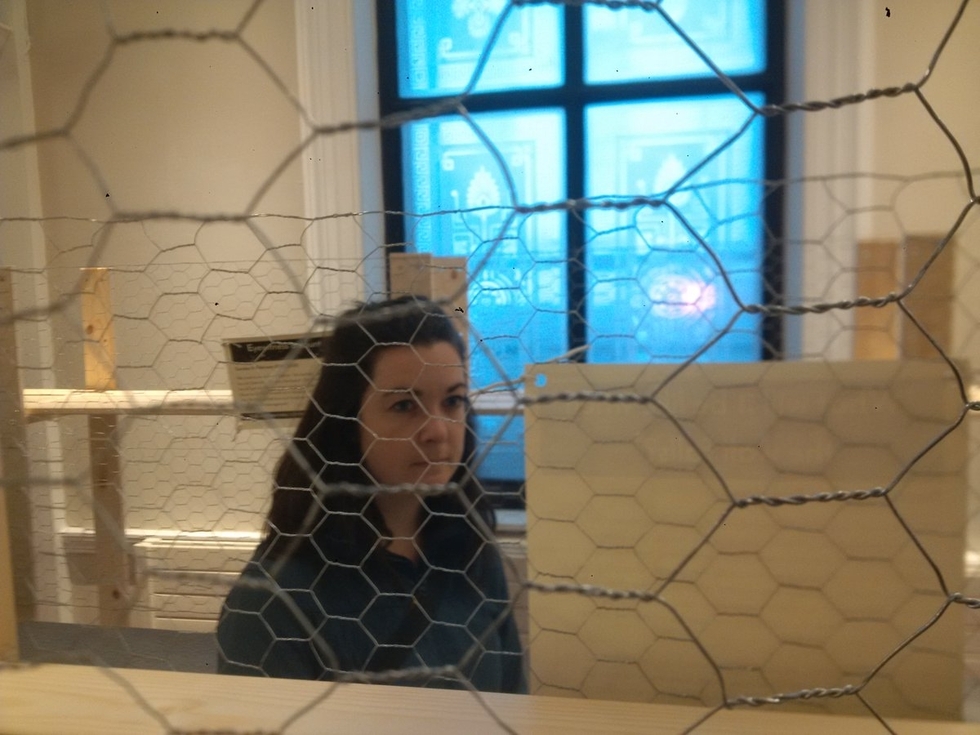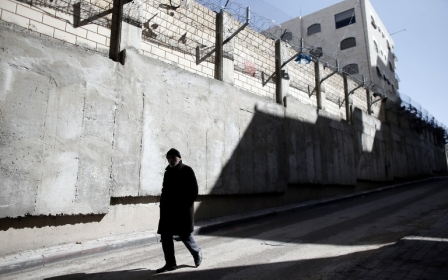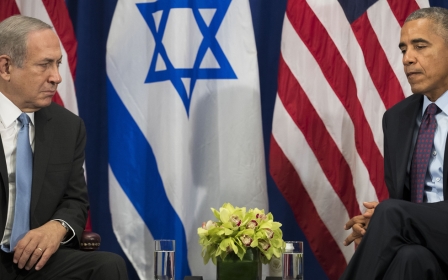How a church was smeared for an exhibition about Israeli occupation

When a Methodist church in central London decided to hold a small exhibition about life for Palestinians under Israeli occupation, its members probably did not expect to be smeared as antisemites in the pages of The Times.
Yet that is precisely what happened to the members of Hinde Street Methodist church in Marylebone, in response to its "You cannot pass today" event, held as part of an annual "World Week for Peace in Palestine/Israel".
The exhibition, designed for visitors to “experience what it is like to cross a checkpoint everyday,” was intended to “explore how we break down the walls that divide us so no one lives in fear". It was the result of a church member’s recent visit to the region as a volunteer.
Hardly radical stuff. And yet, as sure as night follows day, one church’s modest attempts to communicate an aspect of life for Palestinians in the Israeli-occupied West Bank was seized upon by Israel’s cheerleaders as a dangerous threat to communal relations.
In The Times, the rabbi of a nearby synagogue claimed that the exhibition could “demonise” Israel, adding: “Why the hell is a church wasting resources on fanning the flames of antisemitism? They should be ashamed.”
Pro-Israel legal activism group Jewish Human Rights Watch also weighed in, claiming that “Jewish people and others cannot but interpret [the exhibition] as offensive.”
Then there was the predictable statement by the Board of Deputies of British Jews, who announced that they were “disappointed” in the church’s conduct, which it claimed “puts unwelcome and unnecessary strain on Christian-Jewish relations".
Even Alan Dershowitz weighed in, opining that for a church to show solidarity with the Palestinians is "singling out" Israel for a double standard, and is thus “antisemitism".
The end result of all this pressure – sorry, “dialogue” – by the Board and the Zionist Federation was that the church agreed to incorporate into their exhibition a table of pro-Israel propaganda and “the display of a statement from the Israeli government".
Setting an example
It is instructive to see such mobilisation against a church display that simply sought “to explore aspects of human rights and dignity,” put together “on the basis of principled impartiality, putting concern for human rights above support of any particular group by referring to international law."
But the exhibition became a target for three reasons. First, it sought to communicate what life is like for Palestinians under a 49-year-long military occupation. Second, at the very least, it invited visitors to question the "security" justification that covers a variety of apartheid policies.
And third, it was a potential precedent – however small – that needed to be made an example of. In this context, threatening "damage to inter-faith relations" is both cynical and self-fulfilling. What sort of "dialogue" is it, anyway, where support for international law is smeared as antisemitism?
A brief word about the idea that Israeli checkpoints are mere "security measures" – necessary, or indeed praiseworthy, if you follow the logic of Israel’s diehard defenders.
There are more than 500 obstacles to Palestinians’ freedom of movement across the Occupied West Bank: hundreds of checkpoints, roadblocks, trenches, and gates. The vast majority of them – including, note, the main access point to Bethlehem – lie in occupied territory.
They exist as part of what numerous human rights groups – Palestinian, Israeli and international – have denounced as a regime of segregation designed for the benefit of an Israeli settler population whose very presence in the territory in question is illegal under international law.
Meanwhile, every single day, thousands of Palestinians without work permits risk imprisonment or worse by crossing into pre-1967 Israel in search of work. They do so, because the separation wall, which the main checkpoints are incorporated into, remains unfinished.
And yet, Israel’s supporters want us to believe that the checkpoints and the wall are existentially vital security measures, rather than an apparatus of land theft and colonial population control.
Complications and truths
On the topic of using the charge of antisemitism to attack any show of solidarity with the Palestinians, last week’s Sunday show on BBC Radio 4 saw the Board of Deputies’ Joel Salmon defend new anti-BDS materials in a debate with new Palestine Solidarity Campaign head Ben Jamal.
While Jamal pointed out that boycotts have always been a valid and important political tool as a response to injustice and rights violations, Salmon kept repeating claims that BDS makes Jewish students “feel uncomfortable".
However, Salmon was unable to either give any examples to justify this assertion, or to prove that the "discomfort" was the result of anything other than a political disagreement about the State of Israel and its policies (a failure noted by presenter Edward Stourton).
Revealingly, when pushed, Salmon objected to BDS on the basis that it “paints a caricature” of a “complex” conflict. In other words, it places the emphasis on the lived experience of the Palestinians under Israeli colonialism, apartheid and occupation.
It is always a variation on the same theme: "it’s antisemitic to single Israel out,", "you’ll damage Christian-Jewish relations,", "Jewish students will feel uncomfortable.". Meanwhile, illegal settlements expand, a Gaza blockade tightens, and hunger-striking prisoners remain detained without charge.
But don’t dream of doing anything about all of that; it’s very complicated, you know.
- Ben White is the author of Israeli Apartheid: A Beginner’s Guide and Palestinians in Israel: Segregation, Discrimination and Democracy. He is a writer for Middle East Monitor, and his articles have been published by Al Jazeera, al-Araby, Huffington Post, The Electronic Intifada, The Guardian’s Comment is free, and more.
The views expressed in this article belong to the author and do not necessarily reflect the editorial policy of Middle East Eye.
Photo: Image of the exhibition this week at Hinde Street Methodist church (Twitter/@PeaceEduQuaker)
Middle East Eye propose une couverture et une analyse indépendantes et incomparables du Moyen-Orient, de l’Afrique du Nord et d’autres régions du monde. Pour en savoir plus sur la reprise de ce contenu et les frais qui s’appliquent, veuillez remplir ce formulaire [en anglais]. Pour en savoir plus sur MEE, cliquez ici [en anglais].





